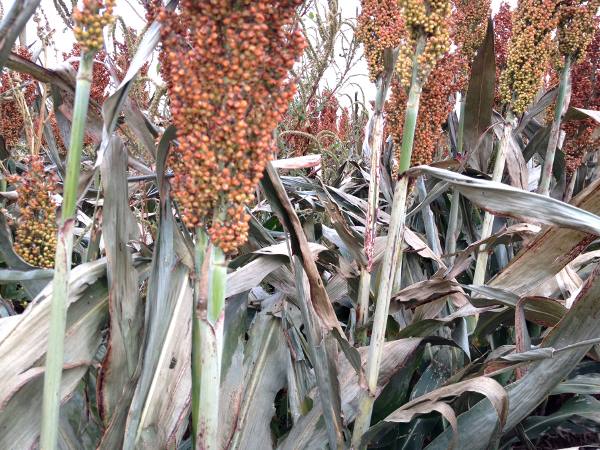October 12, 2012

Grain sorghum producers south of Interstate 40 and around Lubbock might received damaging injury to their crops from the Oct. 8 frost and freeze, according to a Texas A&M AgriLife Extension Service agronomist in Lubbock.
Dr. Calvin Trostle said Lubbock recorded the second earliest freeze on record – the average freeze is Oct. 31. The damaging freeze affected crops in an area from Dimmitt to Silverton in the northern part, to Floydada on the east side, south along the Caprock to the Tahoka-O’Donnell area and west to the state line and back up north, Trostle said.
“The bottom line is, if grain was largely at least in the soft dough stage, I am hopeful it will progress meaningfully toward a marketable test weight,” Trostle said. “But if fields were still green and kernels were in the milk stage, there is little expectation of any sufficient grain development that would achieve a marketable test weight.”
He said fields that were largely in the milk stage should not be considered for grain harvest, but may be assessed for hay or grazing value.
Trostle said the current assessment indicates foliage damage in the South Plains is largely limited to only the top one-third of the plant canopy.
“At this point, I have not seen any fields that I believe received a killing freeze, though reports indicate this might have occurred in a few fields,” he said. “A killing freeze stops all growth immediately, whereas a light freeze mostly affects the leaves.”
Trostle said an indication of moderate freeze damage is the condition of the leaf sheath on the flag leaf. In a light freeze, the leaf sheath will not receive freeze damage like the upper leaves do.
Maturity is a key factor
Grain fill can continue after a light freeze if sufficient leaf area remains undamaged, the stalk is not frozen and temperatures warm up enough after the freeze to drive growth again as the plants attempt to recover from the cold shock, he said.
Temperatures in this region climbed back into the 70s and 80s, so there is a greater possibility that damaged sorghum may indeed have sufficient warmth left in the season to resume meaningful dry matter accumulation, Trostle said.
“If the freeze was light and there is still significant green foliage, then the grain sorghum should be able to take advantage of available heat units to continue maturation, albeit slow, especially when days reach highs of 75 degrees and nights stay at 50 degrees or higher.”
Trostle said it’s highly questionable if grain in the milk stage during the Oct. 8 freeze will develop well, even if the damage was moderate and warm temperatures returned.
“You can’t accurately gauge growth stage of development while driving past a field,” he said. “However, in my experience, when the first tint of color is visible across a field, then the hybrid is most likely at the beginning of soft dough. A general pronounced coloration across the field is often indication of hard dough.”
Trostle said among representative later-planted fields, he has seen about a 10-day difference in maturity.
“If heat is available, I believe we will get some further development in the soft dough grain moving on to early hard dough, provided freeze injury was moderate at worst,” he said.
He said fields that show evidence of moderate freeze injury, which were greater than 60 percent milk stage and largely green across the field, should not be expected to develop any meaningful grain yield from this immature grain.
“At this point, no milk stage grain will reach hard dough, even if weather is favorable,” Trostle said. “If the injury is moderate and the leaf sheaths are not damaged, expectations of grain development with reduced test weight are still only modest.”
Trostle said producers can find a more detailed breakdown of the situation at http://lubbock.tamu.edu under the title Freeze Assessment on Grain Sorghum – South Plains ��– Oct. 8, 2012.
You May Also Like




